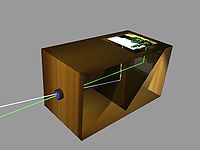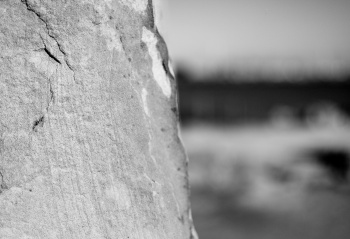Photography
Photography is the art or procedure of creating pictures or images by the action of radiant energy (typically visible light) on a sensitive surface such as reactive film. While black and white is still a popular photography choice, today's digital and film photographs are primarily shot in colour. The word photography comes from Greek words and means “drawing with light.”
History
Frenchman, Joseph Nicephore Niepce,[1] took the first photo in 1826. It was taken in Paris and was called “View From the Window of Gras”. [2] To achieve this, Joseph Niepce used a Camera Obscura and called the process Heliograph. The process never became practical for everyday use and could not be used for commercial purposes.
In 1839 Louis Jacques Daguerre (who worked with Joseph Niepce), announced a new photographic process called Daguerreotype to the French Academy. The process was more practical than Heliography and ushered in the photographic era.
George Eastman (Kodak) in 1885 developed the first flexible photographic film and then in 1889 he produced the first transparent plastic film.
Exposure
Exposure is the amount of light needed to form an image. This is measured with a light meter that are built into modern cameras. It turns on immediately when the camera is switched on. The light meter sensitivity is adjusted by the ISO settings (ISO means: International Standards Organisation). ISO is also sometimes referred to as ISO Ratings.
Light Metering
There are two types of light meter readings. One is called incident. This is where the light falling on the light meter (a hand held light meter) calculates the exposure. The second (which is on SLR cameras) is called reflective light metering. This is the light that is registered reflecting off the object being photographed and reflecting into the camera.
Light metering can be adjusted within your camera for particular situations. In metering there are the terms of correct exposure, under exposed and over exposed. Photographers always aiming for correct exposure. One can always bracket (i.e. take a series of different exposures and then choose the best exposure). This can also be achieved by using exposure compensation. There are different metering systems on the camera
- multi zone metering
- centre-weight average metering
- spot metering
Multi zone metering is when the camera evaluates the whole image then decides the best exposure (this is the most commonly used setting), it is often used in landscape photography. Centre-Weight average metering is when the camera calculates exposure based on the centre of the image (this is common in portrait photography). Spot metering is when a small select area in the image is used to calculate the overall exposure.
Focusing
We have auto focus and manual focus. Auto focus does not work in every situation (situations where it could be a problem; in mono situations where the object and its surroundings are predominately one colour ie all shades of white, black, grey or any colour). According to the Photographic Bible [3] there are three systems of auto focusing and they are called auto focus modes.
- Single Shot-AF
- AL Focus-AF
- AL Servo Shot-AF
Single Shot AF is standard and locks onto the subject until you take the picture. AL Focus is used when you can follow a moving object with the camera with the shutter button pressed half way. At the desired moment you take the photo. The moving object will be in focus. AL Servo shot AF is a combination of the two.
Depth of Field
The area of acceptable sharpness in a photo is know as “Depth of Field”. The Depth of Field is achieved through the size of the lens aperture. The aperture itself can be also be referred to as the iris which is the opening within the lens that the light travels through.
Notation for lenses apertures is expressed as f stops.The scale is f1, f1.4, f2, f2.8, f3.5, f4, f5.6, f8, f11, f16, f22, f32, f45, f64. Most lenses operate in the middle of this range. These numbers are a ratio of the actual aperture diameter. A higher f number denotes a smaller aperture. This means that f1 is the largest aperture and f64 is the smallest.
The depth of field (the acceptable sharpness) is expressed as shallow depth of field and extended depth of field (increased sharpness) or increased depth. The mid point between the two is sometimes referred to as average depth of field.
Flash photography
Flash photography is when the main exposure for the image you are taking is based on the flash it self. There can be just one flash or multiple. With multiple flash units one is referred as the main.
The flash intensity can be control on the flash itself although there are some that don’t. The exposure can be also control with the aperture. The larger aperture, the more light enters the camera. This then results in a shallower depth of field.
See also
- Basic Photography Gear You Will Need When Starting Out
- Want to Setup Your Own Photography Studio
- Tips for Taking Photos Underwater
External Links
References
- ^ Niepce.house.museum
- ^ Seizing the Light: A History of Photography by Robert Hirsch
- ^ The Photographic Bible by Daniel Lezano


